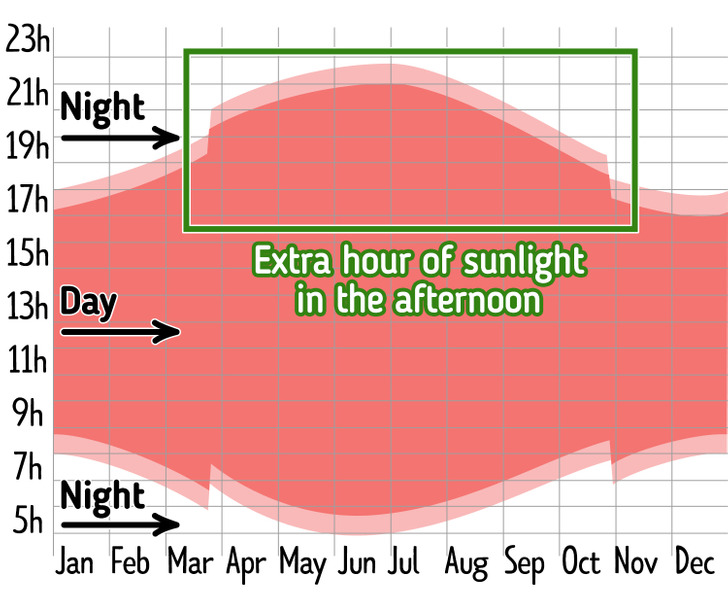Why the Hour Changes in Some Countries

Different people all around the world adjust their clocks 2 times a year, even if the reason why they do so is not very clear. While some countries do it, several have stopped over the years due to its disadvantages. 5-Minute Crafts is going to explain what we found out about it.
Why countries started changing their clocks

Every March, some countries change their clocks by going forward one hour, adhering to what is called daylight saving time. In October, clocks get set back by one hour, exiting daylight saving time by going back to the normal timezone.
The change makes sunrise happen an hour later, at 6:30 p.m. instead of 5:30 p.m. The day the change takes place technically becomes 23 hours long, while the day clocks get set back to normal makes it 25 hours long.
Daylight saving time was first adopted nationwide in Germany in 1916 as a way to save fuel that was spent on electricity. This was soon followed by other European countries and the US.
Daylight saving time around the world

Countries have gone back and forth, adopting it or ditching it throughout history. As of October 2020, fewer than 40% of countries practice the change to daylight saving time.
In countries like Australia and Canada, not all of their provinces or states do it the same way, with some provinces not practicing the change at all. Similarly, 2 states in the US don’t do it.

Around 140 countries have adopted the change in the past, with some having stopped doing it.
Turkey has been in daylight saving time permanently since 2016 and the US has been preparing a similar approach for 2023 onward.
Advantages and disadvantages

Advantages:
- More daylight leads to an increase of safety by lowering car accidents.
- It can be good for the economy, as an extra hour of daylight increases the number of people shopping after work.
- Additionally, an extra hour post-work increases participation in outdoor activities, which betters population health.
Disadvantages:
- The 23-hour and 25-hour days generated at the beginning and end of daylight saving time can deregulate people’s sleep schedules, increasing headaches and even an increase in heart attacks.
- The deregulation of sleeping times can decrease productivity at work and waste time online due to tiredness.
- Time wasted physically changing all the clocks can be considered expensive, especially in the workplace since that time could be used more productively.